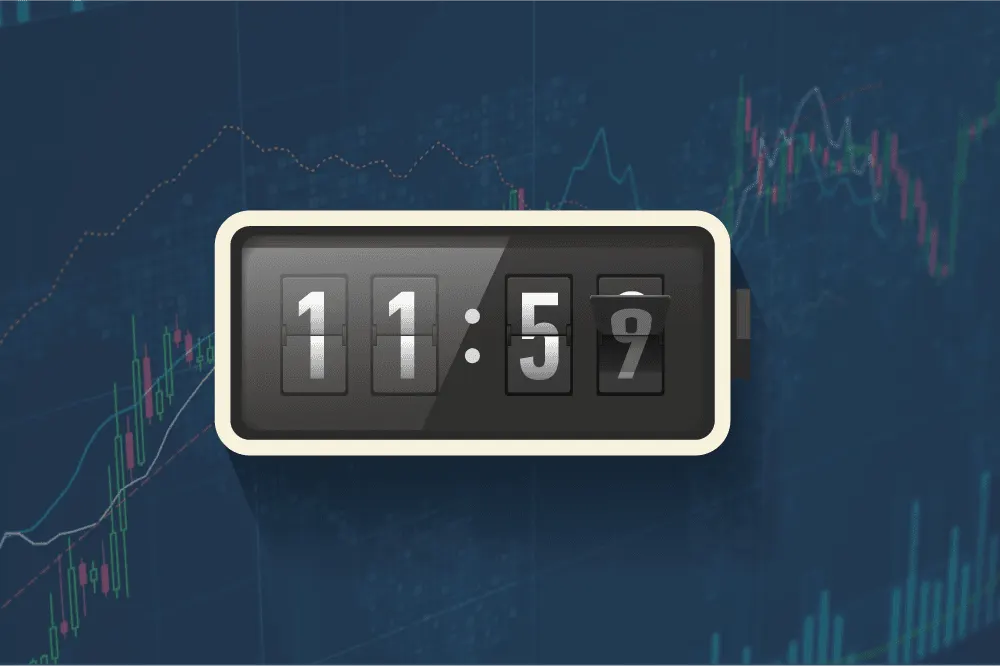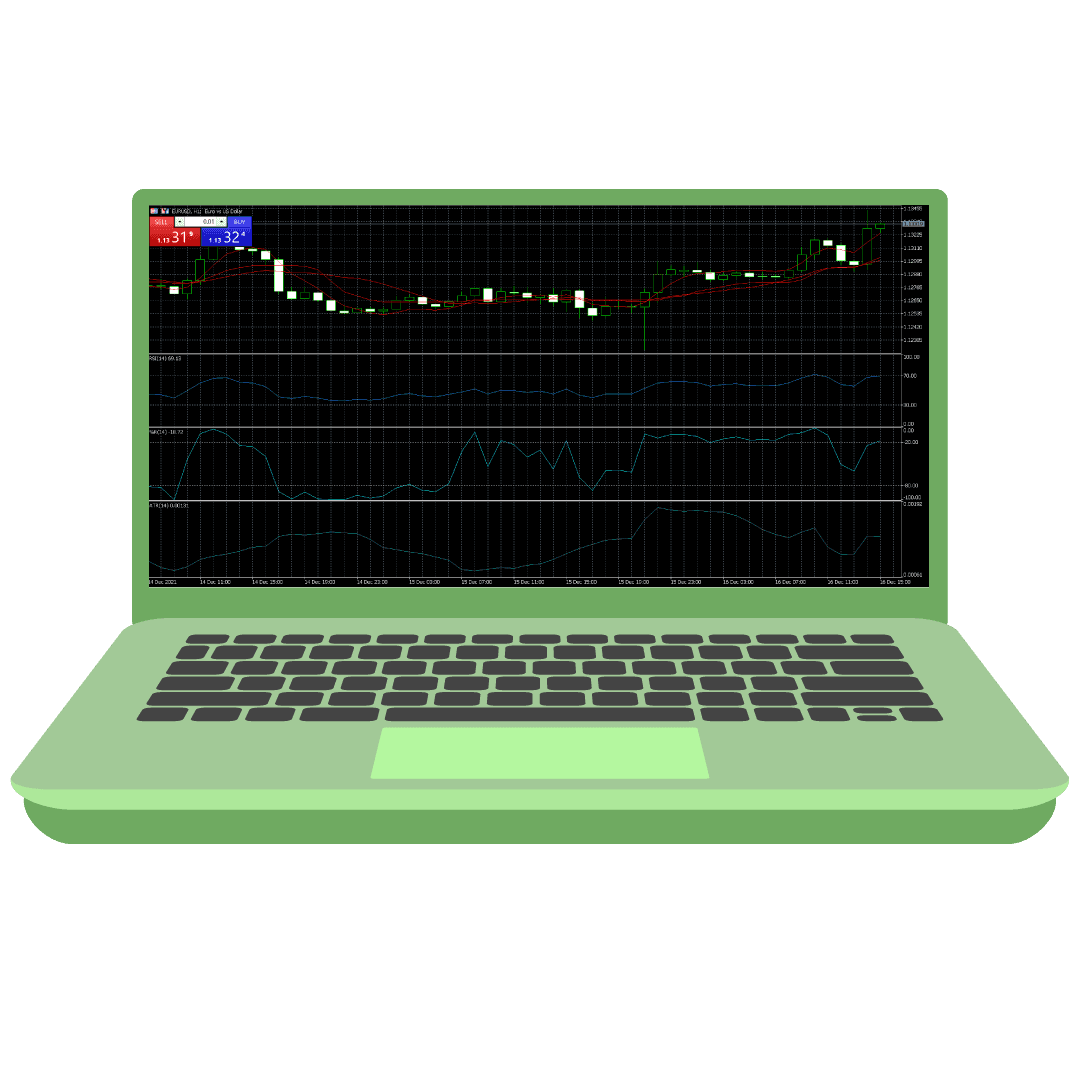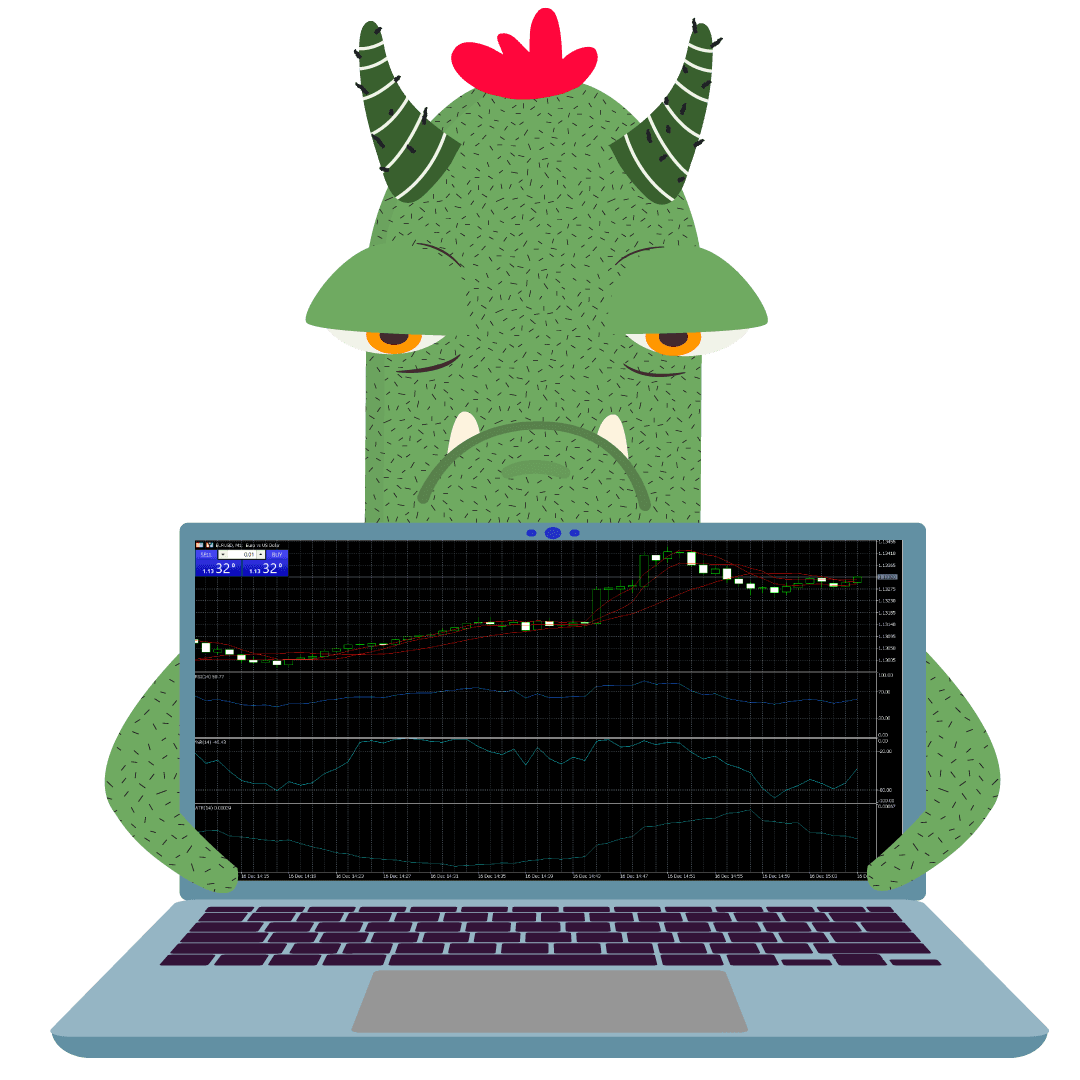Our partner, XM, lets you access a free demo account to apply your knowledge.
No hidden costs, no tricks.

Are you a day trader or a scalper? If yes, then the decisions you make when trading have to be done in small time frames. But when it comes to the point where you actually make these decisions, it is hard to do without any assistance. So to make this process more effective and efficient, traders started utilizing different moving averages specially built for small time frames.
The best moving average for 1 min chart is the Exponential Moving Average (EMA). EMAs are very sensitive indicators, which can provide traders with timely and accurate information about market conditions. This is an ideal chart for small time frames such as the 1, 3, and 5-minute charts.
This indicator is very responsive to price movements, providing a smoother moving average. For the best outcome, traders frequently double-check the trade by using 2 moving averages at the same time. For example, you can use 2 EMAs of different timeframes simultaneously.
In today’s guide, we are going to discover the best moving average indicators for 1-minute charts. Follow our guide and see which indicators are best and how to use them.

Short-term traders, especially scalping traders, require continuous feedback on short-term price movements in the market to make fast decisions about their positions. Moving averages are perfect indicators for them, as these indicators allow traders to conduct quick yet effective technical analyses in no time.
“Patterns don't work 100% of the time. But they are still critical because they help you define your risk. If you ignore patterns and focus on hunches, feelings, and hot tips, just forget about achieving consistency.” -Ifan Wei
In most cases, traders who focus on 1-minute charts are called scalpers, who are opening and closing several positions during the day. Other short-term traders, such as day traders, for example, mostly use 5-minute and 15-minute charts.
Moving averages are capable of adding reliability to all technical-based short-term trading strategies. Depending on your personal preferences, you can use Exponential Moving Averages, EMAs, Simple Moving Averages, SMAs, or Smoothed Moving Averages, SMMAs. All of these indicators can be very helpful for a 1-minute moving average strategy.
Below, we will discuss each of these indicators one by one and will help you find out which one is the best choice for you. So, follow our comprehensive guide and find the best indicator for 1-minute chart trading and see how they work.
Exponential Moving Average, simply known as EMA, is one of the most popular moving averages in the market. This trading indicator puts a lot of weight and significance on the most recent price movements, which can be very helpful for short-term Forex traders. Because of the way it works, EMA is known as an exponentially weighted moving average.
The best thing about EMA is that it can be applied to any timeframe on the chart. The best EMA for the 1-minute chart is 7 EMA. This EMA is used to analyze the price movements over the last 7 periods, offering traders very accurate information about the possible short-term price changes in the market.
The EMA can be a great way for traders to understand the general trends in the market. This paired with fundamental analysis, which is a way of analyzing market data (such as central bank reports for example), can be a great help for 1-minute chart traders.
For example, if you are trading the EUR/USD currency pair, you can apply a 7-period EMA to your chart. After this, the EMA will analyze the chart data of the past 7 periods and the indicator will produce buy and sell signals based on crossovers and divergences from the historical average of the market.

While working on your 1-minute moving average strategy, Simple Moving Average, also called SMA for short, can be a great help. The formula for calculating the SMA is as follows: P1+P2+P3+P4/n. Here, P is the asset's price, and n is the number of total periods, in this case, 4. You can use other periods as well. In most cases, much like EMA, 1-minute traders tend to prefer using 7 periods to get a clearer view of where the market is going.
We can calculate SMA for a specific example. Let's take USD/JPY and its price over 4 periods. P1 - 112.23, P2 - 113.41, P3 - 112.05, and P4 - 113.33. The formula would look like this - 112.23+113.41+112.05+113.33/4=112.8. As you can see, it is fairly straightforward to calculate, however, the SMA indicator will do everything for you, and you won’t have to calculate it on your own. It just helps to understand what is happening behind the scenes, even though most things are automated.
This indicator is a great help for those who want to calculate the asset's average price for a particular period. It can be used not only for short-term trading but for other strategies as well. SMA can be calculated over any timeframe, be it 3 days or 300.
Although not as popular as the other two, “Smoothed Moving Average”, aka SMA, is still used by a lot of traders in the market. This is a type of exponential moving average, but it uses a longer period. As the name suggests, this indicator is great for perceiving smoothed data of the market, without having to go through many price fluctuations.
When looking for the best moving average indicator for the 1-minute chart, SMA should not be forgotten as it provides traders with the ability to perceive the general market conditions quickly and easily.
A very interesting thing about this moving average indicator is that along with recent price movements it considers older prices in the data that it uses for its calculations. However, the older data has a minimal impact on the final moving average projection. The best part of this indicator is its smoothing-out function. It is a great way to find the main trends in the market.
Finding the best moving average for the one-minute chart can be a great help for short-term traders, such as scalpers. Moving averages are very widely used in the market and the main idea behind using these indicators is to smooth out the price trends in the market.
These indicators are able to take away the noise from the random, quick, and small changes in the market. When the asset you are trading crosses over the moving average, it can be a sign for technical traders that it is time to start trading.
Because of this, moving averages are very important for Forex traders. Not only are these indicators very helpful for short-term traders, but they can also be quite useful for those who are using long-term trading strategies.
Our partner, XM, lets you access a free demo account to apply your knowledge.
No hidden costs, no tricks.
The Exponential Moving Average, EMA, is the best moving average for 1-minute charts. It is a very sensitive indicator that helps traders find the best buy and sell opportunities in the Forex trading market, by taking cutting through the noise.
While working on the 1-minute moving average strategy, many traders are using a combination of 5, 10, and 20-minute moving averages. This way, they can analyze the market from different perspectives and better understand the possible price movements in the market.
No, MACD is not a good indicator for 1-minute charts. Although it is very popular and many traders believe that MACD is a reliable indicator, most agree that when it comes to 1-minute time frames, this indicator can't really give you the most reliable feedback for your short-term trading.
In most cases, traders prefer to use MACD for 12 and 26-day periods. A positive MACD value, which means that it is above the short-term average, is used to signal increasing upward momentum in the FX trading market.
Those using 1-minute charts for trading need very quick and continuous feedback on the small price movements in the market in order to make fast buy and sell decisions. Moving averages serves this need perfectly, as it gives reliable and fast feedback.
Yes. Even though SMA is a very good indicator for 1-minute chart traders, EMA is considered to be a better indicator for these short time frames. The best setup for EMA on the 1-minute chart is considered to be periods of 5 or 7, which analyzes the market price movements within a 5 or 7-minute timeframe. This indicator can be very helpful for traders who want to analyze price movements quickly and with accuracy.